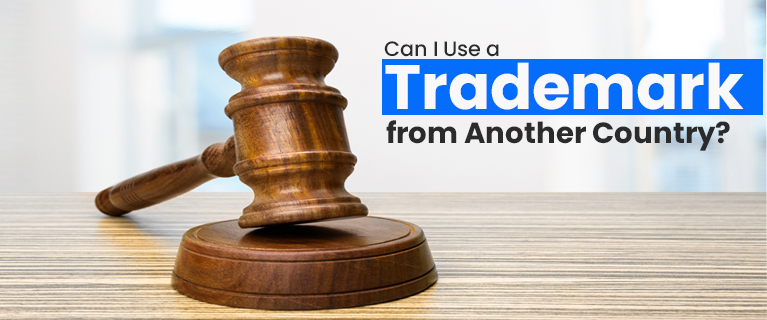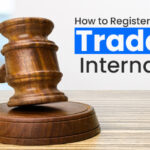In the ever-evolving and expansive global marketplace, where businesses transcend borders in pursuit of broader horizons, the paramount importance of safeguarding brand identity and products cannot be overstated. In this dynamic landscape, characterized by increased connectivity and intercontinental commerce, the imperative to protect intellectual property stands as a foundational element for businesses aiming to thrive on a global scale. One of the cornerstones of Trademark Registration is global trademark protection, a comprehensive approach that goes beyond geographical constraints, ensuring businesses retain their unique identity, reputation, and market share across diverse international landscapes.
At the heart of this strategy is the recognition that the value of a brand extends far beyond local markets. As businesses extend their reach and engage with a global audience, the need to secure and fortify their brand becomes paramount. Global trademark protection serves as a robust framework to achieve this objective, providing a shield against unauthorised use, imitation, and infringement in various jurisdictions. This not only safeguards the brand’s distinctive elements but also reinforces consumer trust and confidence on a worldwide scale.
Read Also This – Can I Use A Trademark From Another Country
Understanding Trademarks:
Definition and Role of Trademarks:
A trademark is not merely a symbol, design, or phrase; it is the heartbeat of a brand, distinguishing the source of goods or services in the marketplace. Beyond branding, trademarks foster consumer trust and clarity in crowded markets, making them indispensable for businesses.
Central to the success of global trademark protection is the meticulous process of trademark registration. To establish a firm foundation for international brand recognition, businesses often initiate trademark registration in key markets, such as the USA. The United States, being a significant hub for global business activities, holds strategic importance for many enterprises. Trademark Registration in USA involves navigating the intricacies of the U.S. trademark system to secure legal recognition and protection for the brand. Through this formal registration, businesses gain exclusive rights to use their trademark in connection with the goods or services specified in the registration, creating a solid legal framework that extends beyond national borders.
A crucial step in this journey is the trademark search, a meticulous exploration of existing trademarks in the desired jurisdiction. Trademark Search is often facilitated by platforms like the United States Patent and Trademark Office (USPTO) database, and is instrumental in identifying potential conflicts and ensuring that the proposed trademark is distinctive and not already in use. Conducting a thorough trademark search is akin to laying the groundwork for a secure and unambiguous trademark registration process, minimizing the risk of rejection or legal disputes down the road.
As businesses navigate the complexities of the global marketplace, the advantages conferred by global trademark protection become increasingly evident. Beyond legal safeguards, trademark registration in key markets such as the USA establishes a tangible presence, signalling commitment and authenticity to consumers and partners alike. It transforms the intangible asset of a brand into a recognized and enforceable right, enhancing the brand’s resilience and marketability in the face of global competition.
To sum up, the narrative of the global marketplace is written by businesses that understand the intricacies of protecting their brand identity across borders. Global trademark protection, coupled with strategic initiatives like Trademark Registration in the USA and diligent Trademark Searches, becomes an indispensable tool in this endeavour. It is a proactive stance, a commitment to authenticity, and a strategic investment in the longevity and success of a brand on the world stage. As businesses continue to expand their horizons, the foresight to prioritize and implement robust global trademark protection measures will undoubtedly be a key differentiator in their journey toward sustained international success.
Types of Trademarks:
Trademarks come in various forms, including word marks, design marks, combination marks, and service marks. Each type serves to identify and differentiate products or services, contributing to a business’s overall success.
1. Word Marks:
Word marks are trademarks that consist solely of words or text, without any accompanying design elements. These trademarks rely on the distinctive nature of the words themselves to distinguish the products or services. Examples include brand names like “Apple” or “Google.” Word marks are versatile and can adapt well across different contexts and industries, providing a straightforward and memorable representation of a brand.
2. Design Marks:
Design marks, also known as logo marks, are trademarks that include distinctive visual elements, such as images, graphics, or stylized text. These trademarks leverage visual aesthetics to create a unique brand identity. The design elements often encapsulate the essence of the brand, enhancing recognition. Examples include the Nike swoosh or the Starbucks mermaid logo. Design marks offer a platform for creative and expressive branding, allowing businesses to convey their brand personality and values through visual elements.
3. Combination Marks:
Combination marks incorporate both words and design elements, presenting a holistic and integrated representation of the brand. By combining textual and visual elements, these trademarks aim to achieve a dual impact, leveraging the strengths of both to enhance brand recognition. Notable examples include the iconic Coca-Cola logo or the McDonald’s golden arches with the brand name. Combination marks allow for comprehensive branding, offering a cohesive and unified identity that resonates with consumers across various touchpoints.
4. Service Marks:
Service marks are specific types of trademarks that specifically identify and distinguish services rather than physical products. These trademarks focus on delineating and safeguarding services offered by businesses, ranging from consulting to entertainment services. Examples include the distinctive service mark for FedEx or the sound mark associated with Intel. Service marks play a crucial role in differentiating services in the market, emphasizing the intangible aspects that set one service provider apart from another.
Understanding the distinctions among these various types of trademarks is fundamental for businesses seeking to establish a strong and effective brand presence. Whether relying on the simplicity of a word mark, the visual appeal of a design mark, the comprehensive representation of a combination mark, or the specificity of a service mark, businesses strategically leverage these forms to create a lasting and recognizable imprint in the minds of consumers. Each type contributes uniquely to a business’s overall success by facilitating brand differentiation, enhancing market visibility, and fostering consumer trust and loyalty.
Read Also This – Why do you need USA Trademark Registration
Importance of Trademarks for Businesses
Trademarks are essential for brand recognition, differentiation from competitors, and protection of intellectual property rights. A strong trademark establishes a unique identity, crucial for a business’s success in the marketplace.
The Need for Global Trademark Protection:
As businesses venture beyond borders, the significance of global trademark protection becomes increasingly evident. A trademark registered in one country does not automatically extend protection to another, leaving businesses vulnerable to the loss of brand identity, reputation, and market share.
Real-world Examples:
The case of Coca-Cola illustrates the enduring value of trademark protection. Since 1892, Coca-Cola has fiercely defended its trademark against counterfeiters and competitors, solidifying its position as one of the world’s most recognized brands. Luxury brands like Chanel, Gucci, and Louis Vuitton also rely heavily on trademark protection to establish exclusivity and ward off imitations.
Navigating International Trademark Law:
- Paris Convention and Madrid Protocol
International trademark law, governed by treaties like the Paris Convention and the Madrid Protocol, sets the framework for protection across borders. The Madrid Protocol, in particular, provides a streamlined avenue for businesses to register trademarks globally through a single application.
- Disadvantages of Using a Trademark from Another Country
Trademark ownership is country-specific, and using a trademark from another country without proper authorization can lead to infringement lawsuits, reputation damage, and limited business expansion. Understanding international trademark law and seeking legal counsel are crucial for navigating this complex landscape.
Securing Global Trademark Protection:
- Importance of Registering a Global Trademark:
Registering a trademark globally is a proactive step to gain exclusive rights in all countries where it is registered. This not only protects a business’s brand name, logo, or distinctive sign but also serves as a powerful tool against potential infringers.
- Steps to Registering a Global Trademark:
Conducting a comprehensive trademark search is the initial step, ensuring the availability of the desired trademark. Filing a trademark application, responding to office actions, and diligent trademark monitoring are subsequent steps in the registration process.
- Best Practices for Protection:
Consistent use of the trademark, vigilant monitoring for infringement, and swift enforcement of trademark rights are best practices for protecting trademarks globally. These practices contribute to maintaining brand integrity and preventing potential legal disputes.
Consequences of Neglecting Global Trademark Protection:
- Legal and Financial Risks
Neglecting global trademark protection can lead to legal disputes, financial losses, and damaged brand reputation. Real-world examples, such as Apple’s trademark dispute in Brazil and Lego’s loss in a Chinese court, highlight the tangible risks associated with inadequate protection.
- Risks to Brand Reputation and Business Opportunities
Loss of brand reputation, legal challenges, missed business opportunities, and difficulty in enforcing trademark rights are among the myriad risks businesses face when neglecting global trademark protection. These risks can negatively impact a company’s valuation and hinder its growth potential.
Read Also This – How to Register your Business Trademark in Canada
Safeguarding Success Globally:
In summary, trademarks are the bedrock of a brand’s identity, and global trademark protection is a strategic imperative for businesses operating internationally. The consequences of neglecting this protection extend beyond legal and financial risks to encompass potential damage to brand reputation and missed business opportunities.
As businesses navigate the complexities of a globalized world, understanding the intricacies of global trademark protection is paramount. By registering trademarks globally, consistently using them, and actively monitoring for infringement, businesses can fortify their brand presence, instill consumer trust, and position themselves for sustained success on the international stage.
For businesses with international operations, the key to success lies in protecting trademarks globally. Conduct thorough searches, register trademarks in relevant countries, and collaborate with trademark attorneys to safeguard intellectual property. By embracing these steps, businesses can fortify their brand, prevent infringement, and ensure long-term success.


